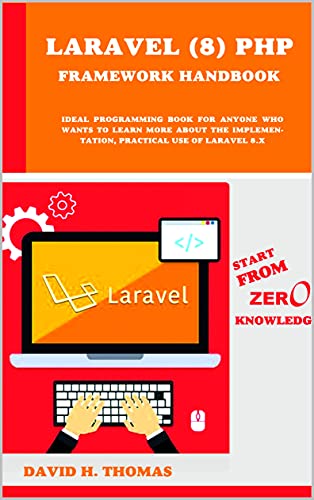Download this PDF book: Organic Chemistry: 100 Must-know Mechanisms: In Organic Chemistry by Roman Valiulin
This book summarizes 100 essential mechanisms in organic chemistry ranging from classical such as the Reformatsky Reaction from 1887 to recently elucidated mechanism such as the copper(I)-catalyzed alkyne-azide cycloaddition.
The reactions are easy to grasp, well-illustrated and underpinned with explanations and additional information.
Pedagogical Principles. At first, every body of knowledge that is new to us seems to have boundless complexity and creates the initial impression of incomprehensibility and even fear.
Organic chemistry provides an excellent example of this phenomenon. The discipline is replete with complex and initially abstract concepts, as a result the information may seem overwhelming, particularly for the young chemist.
But as with most new subjects, consistent study and practice reveals patterns, commonalities, rules, and an apparent logic. Eventually, an “architecture” becomes more appar- ent as we grow to become more experienced chemists. To develop this intuition, it requires close study, repetition, and breadth of exposure.
A significant element of that learning is intrinsic and simply requires time and immersion. However, to help with the development of this intuition, an organic chemist would also be wise to focus on mechanisms for organic reactions as a foundation or anchoring point. This, in combination with deep study, can help organize knowledge into skill and expertise.
An understanding of reaction mechanisms provides a solid foundation for the field and a scaffold for further study and life-long learning. Mechanisms are highly useful because they can logically explain how a chemical bond in a molecule was formed or broken and help to rationalize the formation of the final synthetic target or an unde- sired side-product.
Moreover, as we parse an increasing number of mechanisms, we begin to see the similarities and an invisible conceptual “thread” then forms in our mind’s eye that was not previously apparent.
It helps to organize thinking and brings sense to the otherwise foreign concepts such as reactive intermediates, transition states, charges, radicals, and mechanistic arrows.
Contents:
1 Electrophilic Addition Mechanism
2 Nucleophilic Substitution Mechanism
3 Aromatic Electrophilic Substitution Mechanism
4 Aromatic Nucleophilic Substitution Mechanism
5 Aromatic Radical Nucleophilic Substitution Mechanism
6 Elimination Mechanism
7 Acyloin Condensation
8 Alkyne Zipper Reaction
9 Arbuzov Reaction
10 Arndt‒Eistert Synthesis
11 Baeyer‒Villiger Oxidation
12 Barton Decarboxylation
13 Baylis‒Hillman Reaction
14 Beckmann Rearrangement
15 Benzoin Condensation
16 Benzyne Mechanism
17 Bergman Cyclization
18 Birch Reduction
19 Bischler‒Napieralski Cyclization
20 Brown Hydroboration
21 Buchwald‒Hartwig Cross Coupling
22 Cannizzaro Reaction
23 Chan‒Evans‒Lam Cross Coupling
24 Chichibabin Amination
25 Claisen Condensation
26 Claisen Rearrangement
27 Cope Elimination
28 Cope Rearrangement
29 Criegee & Malaprade Oxidation
30 CuAAC
31 Curtius Rearrangement
32 Darzens Condensation
33 Dess‒Martin Oxidation
34 Diazotization (Diazonium Salt)
35 Diels‒Alder Cycloaddition
36 Di‒π‒Methane Rearrangement
37 Favorskii Rearrangement
38 Fischer Indole Synthesis
39 Friedel‒Crafts Acylation & Alkylation
40 Gabriel Synthesis
41 Gewald Reaction
42 Glaser–Eglinton–Hay Coupling
43 Grignard Reaction
44 Grob Fragmentation
45 Haloform Reaction
46 Heck Cross Coupling
47 Hell–Volhard–Zelinsky Reaction
48 Hiyama Cross Coupling
49 Hofmann Elimination
50 Horner–Wadsworth–Emmons Olefination
51 Jones Oxidation
52 Kucherov Reaction
53 Kumada Cross Coupling
54 Ley–Griffith Oxidation
55 Liebeskind–Srogl Cross Coupling
56 Mannich Reaction
57 McMurry Coupling
58 Meerwein–Ponndorf–Verley Reduction
59 Michael Addition
60 Minisci Reaction
61 Mitsunobu Reaction
62 Miyaura Borylation
63 Mukaiyama RedOx Hydration
64 Nazarov Cyclization
65 Nef Reaction
66 Negishi Cross Coupling
67 Norrish Type I & II Reaction
68 Olefin (Alkene) Metathesis
69 Oppenauer Oxidation
70 Ozonolysis
71 Paal–Knorr Syntheses
72 Paternò–Büchi Reaction
73 Pauson–Khand Reaction
74 Peptide (Amide) Coupling
75 Pictet–Spengler Reaction
76 Pinacol–Pinacolone Rearrangement
77 Polonovski Reaction
78 Prilezhaev Epoxidation
79 Prins Reaction
80 Pummerer Rearrangement
81 Ramberg–Bäcklund Rearrangement
82 Reformatsky Reaction
83 Robinson Annulation
84 Shapiro Reaction
85 Sonogashira Cross Coupling
86 Staudinger Reaction
87 Steglich Esterification
88 Stille Cross Coupling
89 Suzuki Cross Coupling
90 Swern Oxidation
91 Ugi Reaction
92 Ullmann Aryl–Aryl Coupling
93 Upjohn Dihydroxylation
94 Vilsmeier–Haack Reaction
95 Wacker Oxidation
96 Wagner–Meerwein Rearrangement
97 Weinreb Ketone Synthesis
98 Wittig Reaction
99 Wohl–Ziegler Reaction
100 Wolff–Kishner Reduction
About the book:
Publisher : De Gruyter (April 20, 2020)
Language : English
Pages : 251
File : PDF, 15MB
Free Download the Book: Organic Chemistry: 100 Must-know Mechanisms: In Organic Chemistry by Roman Valiulin
PS: Share the link with your friends
If the Download link is not working, kindly drop a comment below, so we'll update the download link for you.
Happy downloading!









Sorry, download link for me doesnt work
ReplyDeleteSorry, download link for me doesnt work (Organic Chemistry: 100 Must-know Mechanisms in pdf)
ReplyDeleteThanks